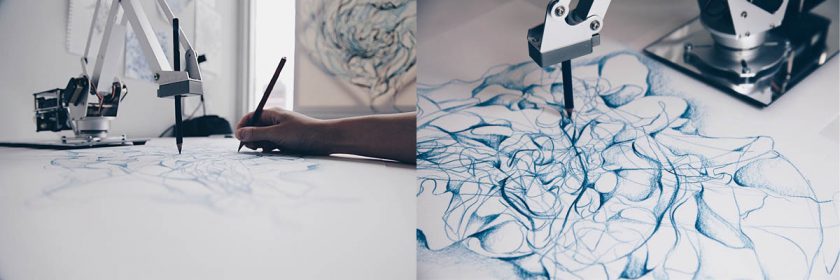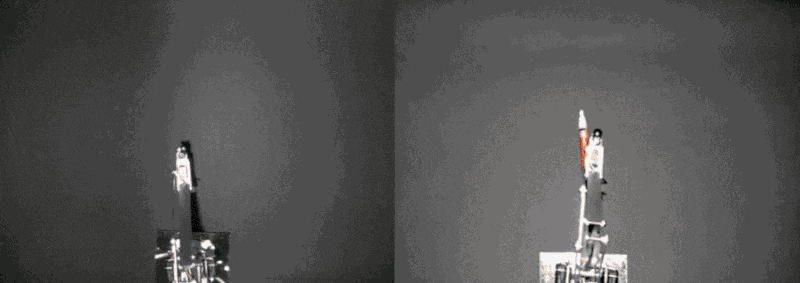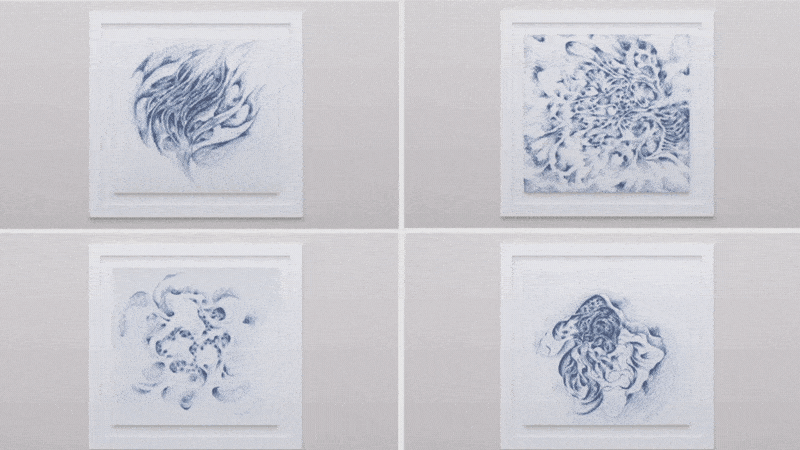Sougwen Chung, Drawing Operations Unit (Generation 1 & 2, 2017-8)

Sougwen Chung’s Drawing Operations Unit is the artist’s ongoing exploration of how a human and robotic arm could collaborate to create drawings together. In Drawing Operations Unit: Generation 1 (D.O.U.G._1), the robotic arm mimics the artist’s gestural strokes by analyzing the process in real-time through computer vision software and moving synchronously/interpretatively to complement the artist’s mark-making. In D.O.U.G._2, the robotic arm’s movement is generated from neural nets trained on the artist’s previous drawing gestures. The machine’s behavior exhibits its interpretation of what it has learned about the artist’s style and process from before, which functions like a working memory.
I love how the drawing comes into being through a complex dynamic between the human and machine – the act of drawing becomes a performance, a beautiful duet. There is this constant dance of interpretation and negotiation happening between the two, both always vigilant and aware of each other’s motions, trying to strike a balance. The work challenges the idea of agency and creative process. The drawing becomes an artifact that captures their history of interaction.

There are caveats to the work as to what and how much the machine can learn, and whether it could contribute something more than just learned behavior. As I am painfully aware of the limitations of computer vision, I cannot help but wonder how much the machine is capable of ‘seeing’. To what extent could it capture all the subtleties involved in the gestural movements of the artist’s hand creating those marks? What qualities of the gesture and mark-making does it focus on learning? Does it capture the velocity of the gestural mark, the pressure of the pencil against the paper through conjecture? Are there only certain types of drawings one can create through this process?
It would also be wonderful to see people other than the artist draw with the machine, to see the diversity of output this process is capable of creating. The ways people draw are highly individualistic and idiosyncratic, so it would be interesting to see how the machine reacts and interprets these differences. I would also like to see if the machine could exhibit an element of unpredictability that goes beyond data-driven learned behavior, and somehow provoke and inspire the artist to push the drawing in unexpected creative directions.

Project Links: D.O.U.G._1 | D.O.U.G._2